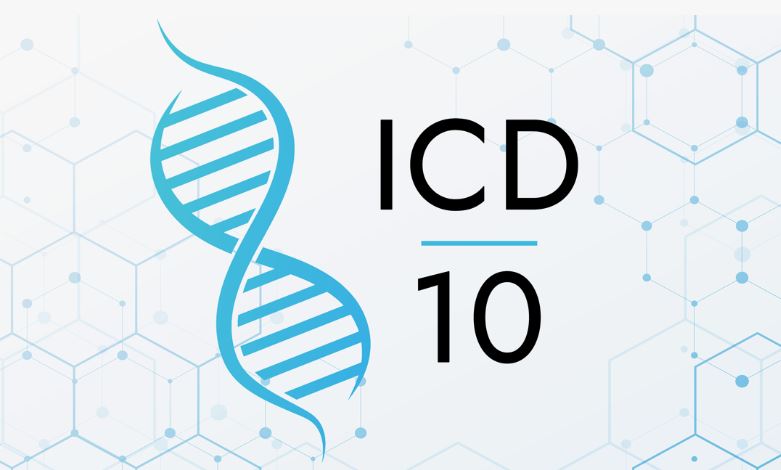During a colonoscopy, colorectal polyps are frequently discovered. Although estimates vary, the frequency of polyps in adults is thought to be 20% in general and 40% in persons over 50. This estimate suggests that anyone who regularly records colonoscopies will frequently have the chance to submit ICD-10-CM coding of colorectal polyps.
What are polyps?
An additional bit of tissue that forms inside your body is called a polyp. Colonic polyps develop in the colon, or big intestine. Most polyps don’t pose a threat. But some polyps have the potential to become cancerous or already have. Doctors remove and examine polyps for safety. During a colonoscopy, a physician can remove polyps from the large intestine by inspecting its interior. Although polyps can affect anyone, some people are more susceptible than others. If you are over 50 and have previously had polyps, your chances of developing new ones may be higher.
- possess a relative that has polyps
- possess a familial background of colon cancer.
Risk factors signs, and diagnosis:
Although everyone can acquire colon polyps, those 50 years of age or older are more susceptible. In addition, smoking, being overweight, and a personal or family history of colon polyps or colon cancer are risk factors.
Colon polyps can be level, sessile (marginally lifted), or pedunculated (on a stalk). They could be adenomatous or hyperplastic. Colon polyps that are hyperplastic have a serrated appearance and hardly ever develop malignancy. Follow-up is necessary for adenomatous colon polyps, which carry a high risk of cancer and can be tubular, tubulovillous, villous, or sessile serrated. Cancerous cells are seen in malignant polyps.
Colon polyps typically don’t cause any symptoms and are found via examinations for other disorders, normal medical exams, or colon cancer screening exams. The following are signs and symptoms of colon polyps:
- bleeding in the lower abdomen.
- black-looking chairs or stools with bloodstains.
- diarrhea or clogging enduring longer than a week.
- stomach pain.
- Anemia due to a lack of iron.
Stool tests, colonoscopy, sigmoidoscopy, and computed tomography (CT) scans are among the techniques used to diagnose colon polyps. A polypectomy is carried out to remove precancerous polyps, also known as adenomas, before they develop into cancer. Colonoscopy is thought to be the best way to examine the colon since it gives the doctor a view of the entire lining and makes it possible to remove the majority of polyps that are found.
Coding of Colorectal Polyps:
The location-specific ICD-10 codes for benign adenomatous polyps of the colon can be found in the ICD-10-CM neoplasm chapter. In order for the diagnosis code to be assigned correctly, the paperwork needs to state:
- The precise place where the polyps are
- The kind of polyps.
ICD-10-CM coding of benign colorectal polyps:
The code used to report the benign colon/rectal polyp is D12. Benign neoplasms of the colon, rectum, anus, and anal canal are categorized based on their anatomical location. D12.0 Benign cecum neoplasm.
- D12.1 Benign reference section neoplasm.
- D12.2 Benign ascending colon neoplasia.
- D12.3 Benign transverse colon neoplasm
- D12.4 Benign colon tumor of descent
- D12.5 Benign colon sigmoid neoplasm
- D12.6 Benign colon tumor, unidentified (includes colon polyposis and adenomatous polyp)
- D12.7 Rectosigmoid junction benign neoplasm
- D12.8 Benign tumor of the lower abdomen.
Also Read:
- Periprosthetic Fracture Coding and Sequencing
- ICD-10-CM Coding for Alzheimer’s Disease
- FY 2025 ICD-10-PCS Code Updates
ICD-10-CM coding of inflammatory colorectal polyps
Category K51, Ulcerative colitis:
- K51.40 contains the codes for inflammatory colon polyps. colonic polyps that are provocative but not complicated.
- K51.411 Collagenous polyps accompanied by rectal hemorrhage K51.412 Collagenous polyps associated with intestinal blockage
- K51.413 Colon polyps with inflammation and fistula
- K51.414 Colon polyps with inflammation and abscess
- K51.418 Colon polyps with inflammation and other complications.
To identify manifestations, ICD-10 directs reporting an additional code (e.g., L88 for pyoderma gangreno sum) with category K51 codes.
ICD-10-CM coding for Reporting Additional Polyps:
K63.5 colon polyp NOS: When adenomatous or neoplastic polyp is not mentioned, the default code.
hyperplastic polyp: K63.5, is utilized to report a hyperplastic polyp.
Rectal polyp: Rectal polyp is coded K62 in the ICD-10.
History of Colon Polyps:
According to the AAPC, two codes must be verified if a polyp is discovered during a colonoscopy and the patient has a family history of colon polyps. Z83.71 and K63.5 colonic polyp history in the family
Cancerous Neoplasm(s):
Malignant neoplasm(s) of the colon and rectum have the following ICD-10 codes:C18 Colon malignant neoplasm
- C19 tumor of the rectosigmoid junction that is malignant.
- C20 Rectal malignant neoplasm.
Conclusion:
As early-stage, treatable colorectal cancer and the majority of colon polyps are asymptomatic, routine screening is advised. When realized prematurely, colorectal cancer is very curable. Colon polyps and colorectal cancer can be avoided by leading a healthy lifestyle that includes frequent exercise and a balanced diet. Treatment for rectum and colon illnesses, mostly colon cancer, can be difficult. Physicians may rely on an experienced medical billing and coding organization like The Medicator’s to ensure proper code assignment and error-free claim submission while they concentrate on providing high-quality patient care.









